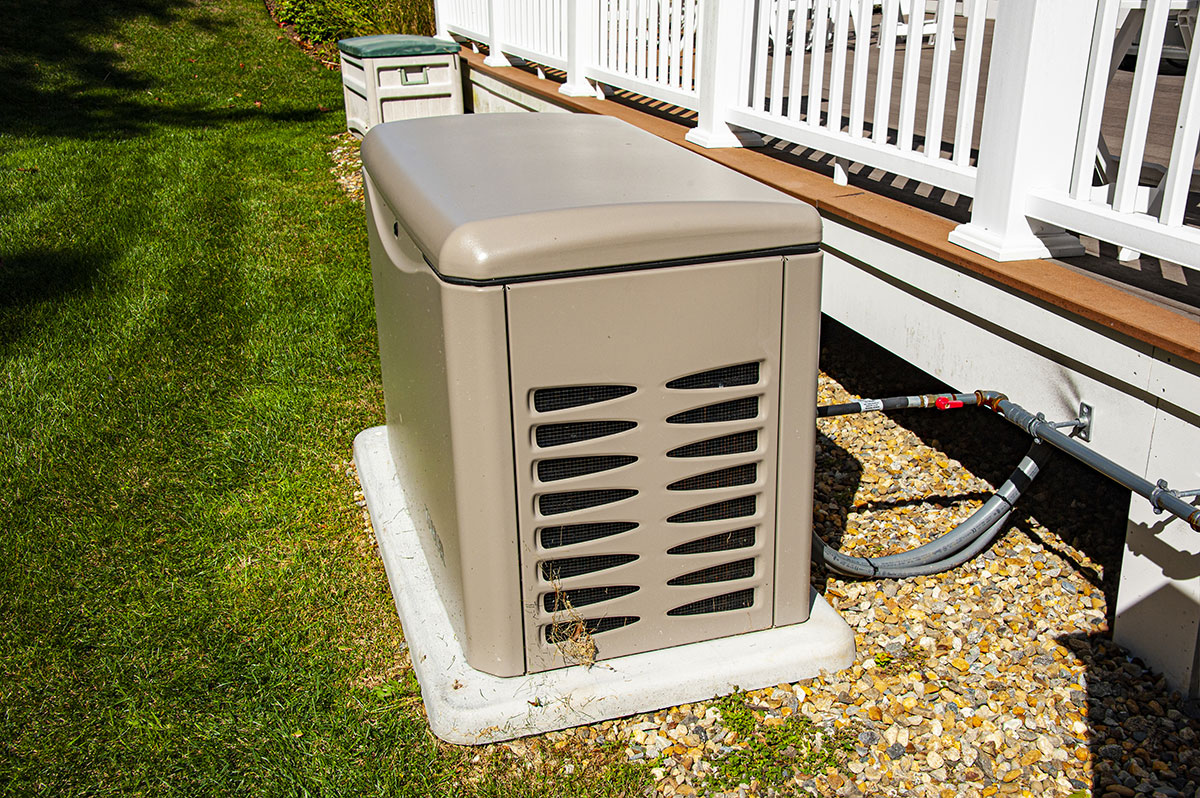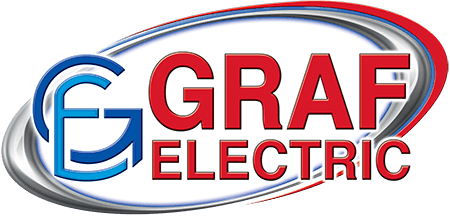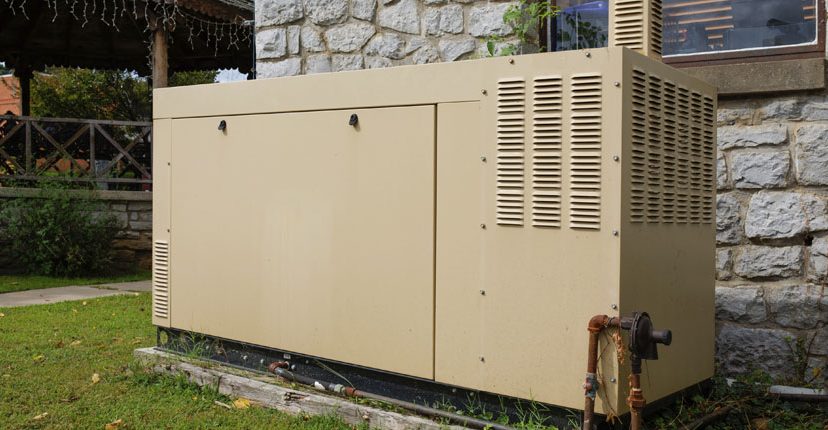
A generator provides peace of mind and can be a literal lifesaver during power outages. It can power essential equipment so you and your family can stay safely in your home until the electricity is restored. If you’re considering investing in a backup generator, you may be wondering what size generator you need for your house. Graf Electric is an experienced residential electrician in Wichita, KS, and we’re providing our expert guidance on choosing the correct size generator for your house.
Why It’s Important to Choose the Correct Size Generator
A generator that’s too small could get overloaded and possibly cause a fire. On the other hand, you don’t want to waste money on a generator that’s bigger than your needs, especially when you factor in the cost of fuel. Choose a generator powerful enough to keep your essential systems and appliances running during an extended power outage if needed.
Factors to Consider for Generator Sizing
Here are some key factors to think about when deciding how big of a generator you need for your home:
How Often You Experience Power Outages
There are many reasons the power can get knocked out, such as a power grid failure, hurricane or tornado. Here in Kansas, high winds, thunderstorms, ice storms and other severe weather cause power outages any time of year. Going without electricity for a couple of hours isn’t usually a big deal for most of us, but if the outage lasts for days, it could become a serious, and even life-threatening, situation.
Keep in mind, there’s a possibility outages will become longer and/or more frequent with the recent extreme weather in the U.S. According to the U.S. Energy Information Administration, the average power outage length in the United States increased between 2013 and 2021 from 3 hours to 5 ½ hours.
What Would Happen Without Backup Power?
Without an emergency backup power system for your home, your furnace blower won’t run, so a power outage in the winter could result in frozen and burst pipes.
If the power goes out during a summer thunderstorm, your sump pump would stop running, which could lead to a flooded basement. Your refrigerator and air conditioner wouldn’t work either, leaving you with spoiled food and possibly a sweltering home.
Without a way to charge your phone or power your WiFi, TVs and radios, you’d have no way to monitor weather conditions, work from home or stay connected with family. And if anyone in your home uses life-saving medical equipment such as an oxygen concentrator, they would be in a dire situation.
Your Budget
For nearly all homeowners, budget is a major factor when choosing a generator. Fortunately, backup generators come in a range of sizes and price points. Be sure to include the cost of fuel in your budget and the costs for installing a transfer switch or a standby generator if needed.
How to Calculate the Right Size Generator for Your Home
Step 1: Identify Essential Appliances and Devices
Make a list of the systems and appliances you would need to keep running during a power outage to keep you safe and comfortable. Essential appliances could include your sump pump, the heating and cooling system, your refrigerator, well pump, electric water heater, fish tank pump and any electrical-powered medical equipment.
Step 2: Add up the Total Power Required
Add up the total watts needed for all the items in your list. You can usually find this information in the owner’s manual or by doing a search online. If the power consumption is listed in amps, multiply it by the voltage (120 for most household appliances) to find the wattage. This will give you the amount of running watts you’d need to power those devices during an outage.
Examples of the wattage needed to power common household appliances and devices:
- Refrigerator/freezer: 600-800 watts
- Microwave: 1200 watts
- Space Heater: 1250 watts
- Cell Phone Charger: 10 watts
- Sump Pump: 1500 watts
- Central Air Conditioner: 2000-4000 watts or more
These running wattages are estimates. Refer to your appliance’s owner’s manual for the specific wattage requirements.
Starting Wattage and Running Wattage
The wattage listed for your appliances and household systems is the rated wattage or running wattage. However, they may require more power to start than to run continuously. This extra power is called the surge or starting wattage. Be sure to include both the running watts and the starting watts in your generator sizing calculation. That will ensure you have a generator with enough power to handle the first 2-3 seconds of extra power that appliances like your refrigerator or air conditioner use each time they cycle on.
Step 3: Choose the Generator Type and Size that Fits Your Needs and Budget
To avoid overloading your generator, choose one with enough watts to handle your estimated needs at less than 90% of its capacity. So if you estimate the amount of power you need to be 9,000 watts, select a generator that’s at least 10,000 watts. This will ensure it has the capacity to keep running without overheating and then shutting off.
Common Generator Sizes and Their Capabilities
There are three main types of home generators. Portable generators are small and lower-priced but they can only power one or two essential devices. Inverter generators cost more but they’re quieter and provide enough power to run one or two appliances and lights. A whole-house generator, also known as a home standby generator, is a permanently-installed fixture that’s directly wired to your home’s power supply. It can take over automatically in the event of a power failure.
These are examples of different sizes of generators’ power output in running watts. You may see an additional number on the label for starting watts:
Small Generators (1,000 – 3,000 watts)
Can power one item at a time, such as a sump pump, television, microwave, refrigerator, space heater, or electric stove.
Medium Generators (3,000 – 8,000 watts)
Can power multiple appliances at the same time, such as an air conditioner, space heater, refrigerator, space heater, electric water heater, electric stove, washer, dryer, a few small appliances and some lights.
Large Generators (8,000 – 12,000 watts)
Can power multiple appliances at the same time, such as a refrigerator, dishwasher, window air conditioner, washing machine, electric stove, sump pump, furnace, television, small appliances and lights.
Extra-Large Generators (12,000+ watts)
Can power nearly everything you’d need during a power outage all at once, such as sump pump, lights, furnace, window air conditioner, well pump, TV, computer, refrigerator, microwave, and more.
Additional Considerations
Noise Level
Portable generators are the loudest, and they will need to be kept outside the home when running to avoid carbon monoxide (CO) buildup. Inverter generators and standby generators are quieter and provide a bigger amount of electricity.
Fuel Type
Inverter generators run on gasoline, which could be difficult to come by in the event of a natural disaster or severe weather event. You’ll need to be able to store around 25-30 gallons of gasoline so it’s ready for a power outage.
A whole-house generator is usually powered by propane or natural gas, so you can have a propane tank installed or connect the generator to your existing natural gas line or propane tank.
Portability and Installation
Consider whether you want a generator you can move out of the way or not. Also consider the costs of fuel and installation, if needed. An inverter generator can be moved and stored out of the way when not in use. You may need to have a transfer switch installed on your circuit breaker box to automatically switch your home’s electrical system from the power grid to the generator when needed. This cost should be included in your whole-house generator installation, though.
Get a Personalized Recommendation
In the Wichita, Kansas, area, contact Graf Electric for an estimate on whole-house backup generator sizing and installation.

